Fujiyoshida, Yamanashi, Japan – Tuesday, June 21st, 2011
This was the day I was dreading. Fuji-Q Highland was of course a required visit for any first time roller coaster tour of Japan. Fuji-Q (formerly Fujikyu, still seen on many of the park’s signs as of 2011) was one of the two most popular homegrown Japanese amusements parks, second only to Nagashima Spaland, and was an especially high target for coaster enthusiasts as the home to three of Japan’s most unique and ambitious coasters, all record-breakers with a spectacular view near the foot of Mount Fuji. But besides the coasters, Fuji-Q was notorious not just among Japanese parks, but likely worldwide, as the park that has caused the most coaster enthusiast frustration for its perpetually long, slow-moving lines and inefficient operations. Even with only six coasters, it was not uncommon for visiting enthusiasts to be unable to complete the entire set within the hours between open and close, let alone have time for repeats or any other attractions. To mitigate against that risk, I arrived 45 minutes before the 9:00am opening, where I was pleased to see was early enough to make me the first in line at the northeastern entrance.
After a week of rain and overcast in Japan, today was the first day that blue skies were visible behind a layer of puffy clouds. While I appreciated the contrast in weather, I worried about what effect the clear forecast might have on attendance.
Although I’d have the advantage of being first in after the rope drop, I’d need to store my bag in a locker after entering the park which could waste precious minutes. I hoped to get at least two coasters of the list relatively quickly before the crowds could fill in. After that, I could only hope that things wouldn’t be so bad that I could have time to do the remaining four, and if I was lucky get a second round on each of the three big ones before park closing. Was that too much to expect from Fuji-Q?
Finally the opening hour ticked near, and I realized that only a handful of other visitors had arrived in line behind me. I knew there was a second entrance close to the parking lot, so I didn’t want to let my guard down. As soon as the gates opened, I quickly bought my ticket, found the lockers, and then went racing towards my first coaster in nearly four days.
Fujiyama. Because it was closer to the car park entrance, I wasn’t on the first train of the day, but didn’t have to wait too long for a ride on the second. Amazing ride, I wanted to do it first as it was the coaster I most hoped to get more than one ride on during the day. I’d be back later. I had a schedule to keep.
Mad Mouse next. Yes, my plan was working, there wasn’t any wait!
There was no one else waiting to ride this unique compact coaster, which seats only two riders per vehicle. The ride has a somewhat unconventional layout, a free-form wild mouse with lots of tight switchback turns going in all different directions, occasionally with a random dip or bunny hop between them. Because there were no large drops the top speed isn’t very high, but that just means a longer-lasting ride, with frequent and unpredictable turns and dips still makes it fairly exciting.
Mad Mouse was reasonably fun for what it is, but obviously not worth even a half-hour wait, and given the low capacity and outdated engineering it’s little surprise this coaster was eventually removed at the end of 2019.
Getting off Mad Mouse, I had the instinct to hustle to my next coaster, but then I paused and took a moment to look around. There was still no one lining up for the Mad Mouse. The small queue that had formed for Fujiyama during my first ride had already gotten through. There were only a handful of people leisurely strolling the pathways, and I saw no indication that greater crowds were in the process of streaming through the entrance. I hadn’t been successful with an early morning rope-drop strategy. This was it. Whether it was because of the tsunami or the normal off-season patterns or both, very few people were visiting Fuji-Q Highland today despite the good weather. It gradually dawned on me that, despite my worries, crowds and long lines were never going to become an issue. For the next 7 1/2 hours, I had some of the best coasters in Asia largely to myself. In all of my in travels, I don’t believe I’ve ever had reality exceed my (admittedly rock-bottom) expectations as vastly as it did today.
With light crowds, I could appreciate all the best qualities of Fuji-Q Highlands. First of all, the setting is fantastic. I strongly believe that amusement and theme parks, as places you have to physically travel to within the world (even make a pilgrimage to, as the case may be), should openly reflect and be in dialogue with their location, rather than use a berm to completely isolate the park from the world outside. At Fuji-Q, its namesake Mount Fuji is visible from just about anywhere inside the park. It’s not just a beautiful setting, but it can be immediately contrasted with the towering steel mountain range of roller coasters that also surround you from every perspective, together creating a dynamic experience of the sublime as one feels their own smallness in relation to the world, but also the achievement that comes from conquering that terrifying vastness, yet without having to climb Fuji itself.
The design style of Fuji-Q Highlands also seemed to reflect modern Japan in a way that few other Japanese amusement or theme parks are capable of. While there are plenty of other Japanese amusement parks that of course feel unique Japanese in nature, such as Mitsui Greenland or even Nagashima Spaland, those do so almost in a folk art manner, as a natural evolution of largely unintentional choices influenced by local cultural and historical factors resulting in those parks’ rather humble, pastoral appearance. The other Japanese theme parks by contrast almost all bear an unmistakable imprint of foreign influence, whether the corporate style of Disney or Universal, or even the desire for overseas travel such as at Shima Spain Village, even if all of these are still very much a deep part of authentic Japanese culture.
theme parks by contrast almost all bear an unmistakable imprint of foreign influence, whether the corporate style of Disney or Universal, or even the desire for overseas travel such as at Shima Spain Village, even if all of these are still very much a deep part of authentic Japanese culture.
Fuji-Q Highlands, however, clearly takes far greater pains over its presentation than any of the other ride-focused amusement parks in Japan, yet does so in a way that isn’t at all “theme-y” or foreign, but instead embraces contemporary Japanese design. The big coasters all have distinctly Japanese names (often based on clever Japanese slang or wordplay), most with logos exclusively featuring the Japanese script, and any English names are phonetically translated (rather than literal) and always in a smaller secondary position. This might seem obvious given that it’s a Japanese park built for a largely Japanese audience, but it’s actually surprisingly rare to see an independent Asian park so carefully and deliberately try to forge its own identity through design separate from obvious western influences.
Even the English subtitle for Dodonpa reads “World’s Bucchigiri Coaster,” which doesn’t make a lot of sense for English speakers, but in Japanese “bucchigiri” is a slang phrase that refers to extreme acceleration, which is both accurate and a more neat and precise description than any English equivalent. (“World’s Fastest Accelerating Coaster” neither has the same ring nor the clarity of meaning.)
Built structures such as the station houses also have a uniquely Japanese style, from Fujiyama’s classical blue pitched roof atop a white structure…
…to Dodonpa’s abstracted torii gate-style entrance…
…to Eejanaika’s minimalist architecture adorned with bold pop-art graphic design inspired by traditional Japanese fine arts, almost with echoes of Takashi Murakami in its presentation.
Other rides are also given a distinctly Japanese flair, sometimes subtly, other times more overtly, like this Maneki-neko beckoning cat themed rapids ride.
The Great Fluffy Sky Adventure is a junior suspended coaster with a very kawaii cute cartoon character theme.
Sometimes a Japanese media IP like Gundam is featured.
Other rides are somewhat inexplicably sponsored by a local fast food chain.
And of course the gift shops are full of unique merchandise that I don’t know how to describe, but the words “oddly obsessive” enter my mind?
(Quick aside on the food: I ended up getting a tempura udon in broth that I recall was good enough.)
Interestingly, for the kid’s zone the park opted to license a foreign IP, Thomas the Tank Engine, as Thomas Land. However, given Japan’s own strong rail culture and Anglophilic appreciation for charming old Britain, it actually doesn’t feel out of place in this otherwise very Japanese style park.
Of course the main reason for exploring this area was to ride the kiddie coaster, which bore the odd name Rock ‘N Roll Duncan.
A well-landscaped setting conceals a surprisingly boring ride, even by kiddie coaster standards.
Now to focus on the real reason to visit Fuji-Q Highland… the big coasters. Fuji-Q is anchored by four roller coasters, each of which was a major record-breaker for its time, although at the time of my visit the most recent one, Takabisha, was still under construction. The debut was set for less than a month after my visit, adding yet another notch to my list of new attractions that I had hoped would open while I was in Asia but I ultimately missed, relatively narrowly in this case. While the seven inversion Gerstlauer Euro-Fighter with a launch and the world’s steepest drop was certainly a major statement, in some ways it was the most conservative of the Fuji-Q Four, and the one I was most okay with not getting on this visit. The fact that the layout for this common production model was later replicated in an indoor theme park in New Jersey certainly takes some of the urgency off getting this one.
 The oldest and still largest coaster of the major set is Fujiyama. Togo’s largest creation, it opened in 1996 as the world’s tallest and fastest roller coaster at 259 feet tall and over 80mph. And at 6,708 feet long, Fujiyama is still to this day the world’s second-longest roller coaster with a single lift hill, outlasting even taller and faster gigacoasters like Millennium Force and Fury 325, and only outdone by the nearby Steel Dragon 2000. These are not statistics to be dismissed, yet within the western coaster community it does feel as though Fujiyama has largely gone unnoticed, overlooked during its prime due to its remote distance, and not attracting more international attention until Steel Dragon 2000 had already arrived to steal the spotlight reserved for record-holding overseas attractions. It doesn’t help that Togo’s reputation based on a handful of less-than-successful U.S.-based attractions may have also dimmed excitement levels for Fujiyama, along with the park’s own typically abysmal operating standards whenever people did make the trek. And so if I may offer my own appraisal on where this coaster’s reputation deserves to rate across international standards:
The oldest and still largest coaster of the major set is Fujiyama. Togo’s largest creation, it opened in 1996 as the world’s tallest and fastest roller coaster at 259 feet tall and over 80mph. And at 6,708 feet long, Fujiyama is still to this day the world’s second-longest roller coaster with a single lift hill, outlasting even taller and faster gigacoasters like Millennium Force and Fury 325, and only outdone by the nearby Steel Dragon 2000. These are not statistics to be dismissed, yet within the western coaster community it does feel as though Fujiyama has largely gone unnoticed, overlooked during its prime due to its remote distance, and not attracting more international attention until Steel Dragon 2000 had already arrived to steal the spotlight reserved for record-holding overseas attractions. It doesn’t help that Togo’s reputation based on a handful of less-than-successful U.S.-based attractions may have also dimmed excitement levels for Fujiyama, along with the park’s own typically abysmal operating standards whenever people did make the trek. And so if I may offer my own appraisal on where this coaster’s reputation deserves to rate across international standards:
Fujiyama is, quite easily, the best roller coaster I’ve ridden in Asia. If I still ranked coasters numerically, it would sit comfortably in the bottom half of my top ten list for steel coasters.
To get more specific exactly why Fujiyama is deserving of its title “King of the Coasters,” begin with the rolling stock. Bold in design with pure silver or gold bodies striking a viper-like resemblance, with distinctive Japanese textile design on the seatback prints, and copious legroom with a simple ratcheting lapbar that leaves just the right amount of slack between plastic padding and human thigh. The perfect mix of style and comfort for a megacoaster experience, and even at 80mph they ride pretty smoothly as well.
Yes, the layout engineering is still largely still lines and circles which gives it that old school hypercoaster feeling, similar to Magnum, but those hard edge are probably a big part of why I like it so much. Magnum was inspired by classic wooden coaster layouts, and while the other non-looping hypercoasters that followed in the 90’s either copied Magnum’s simple out-and-back approach or were Toomer-style overgrown mine trains, Fujiyama was the other other one that got the original reference and made its own unique interpretation of it, creating a supersized pastiche of the Coney Island Cyclone and other classic triple-lap almost-twister wooden designs. The resulting layout is a good mix of experiences, never becoming too predictable or repetitive before it switches gears, with nary a block brake in sight.
For the entire nearly two minute duration from the top of the lift hill to the brakes, Fujiyama offers a continual progression of thrills and amazement, from the initial shock of the seemingly bottomless first drop immediately leading with a long, calm elevated turnaround (with breathtaking panoramic views), into a series of big airtime hills and sharply banked fan curves that’s just about meets the classical definition of pure and simple roller coaster fun, before surprising again with a grass-skimming high-speed curve that leads into its finale, a truly intense bucking bronco sequence of sharp, triangular ejector airtime hills—again, hearkening back to Magnum’s sublime finale—but mixed with an undulating slalom zigzagging right and left.
Reading a few reviews, it seems as though this is the most controversial sequence of Fujiyama that leads many to believe the ride would in fact like to kill them. While the mix of sharp airtime with strong laterals does lead to a very aggressive experience that certainly isn’t for everyone, the hard transitions all occur at a very predictable pace, punctuating what is still fundamentally a smooth ride. If it were just a brute random assault there would be little redeeming quality to it, but the discipline of the sequence’s steady back-and-forth rhythm instead results in a finale that offers no apologies but still allows you to easily learn how to lean into it and meet the ride on its own terms, which for me was just at the edge of “too much” without going over. (The spacious, comfortable seating certainly helps, as this sequence would be a horror show with virtually any other manufacturer’s rolling stock.) For what it’s worth, this is my favorite part of Fujiyama, the moment where the coaster went from “pretty darn good” to “surprisingly special,” the moment where I realized it could have easily settled for less but instead tried to push itself to the very limits of its abilities. It’s not quite Magnum, but it sure comes close as a worthy successor.
Any review of Fujiyama should also note its predecessor, the uniquely named Moonsault Scramble. As improbable as all of Fuji-Q’s record-breaking coasters may seem, Moonsault Scramble was easily the most improbable, a reverse-shuttle coaster opening in 1983 (hence the wrestling name), a full year before the first Vekoma Boomerang opened, yet standing nearly 230 feet tall at the top of the lift spike, well beating Magnum to any record-breaking claims if only it weren’t a shuttle. More than the height, the Moonsault Scramble was known for possibly being the most intense roller coaster ever made, with an absurd pretzel loop (with supports that looked like a postmodernist interpretation of the top of the Eye of Sauron) that reportedly pulled 6.2 G’s, well into blackout territory. While the ride was long gone by the time I arrived at Fuji-Q, I’ll never forget its brief (yet euphorically apocalyptic) appearance set to Händel in the CoasterMania documentary from the 90’s, still possibly the best roller coaster documentary ever produced.
The ride that ultimately replaced the Moonsault Scramble has its own legacy of record-breaking force applied to riders on a somewhat bizarrely engineered ride. Dodonpa was the second and final of S&S Worldwide’s commercially-built Thrust Air launch coasters, opening in late 2001 as the world’s fastest roller coaster at over 111MPH, and thanks to its pneumatic air-powered launch, still claimed the record as the fastest acceleration (bucchigiri) on a roller coaster, reaching that speed in a mere 1.6 seconds. Not certain what to expect from such an extreme experience, I approached the launched coaster with tenser nerves than I had felt before any coaster that year. As ever at Fuji-Q, the ride sports some unique stylistic choices, with the bright Pepto-Bismol station and pink polka-dot (or green and red lava crack?) patterns on the ride vehicles leading to a rather contradictory set of sensory impressions as I strapped in and stared into the abyss of the dark tunnel ahead.




 While the build-up and suspense to the launch is nearly as good as any coaster this side of Top Thrill Dragster (replacing the typical countdown with a rhythmic taiko drum beat apparently inspired by the phoentic pronunciation of “Do-Don-PA!”), the final payoff was surprisingly anticlimactic. It turns out, 1.6 seconds is almost too brief to comprehend. One second we’re at a standstill, the next we’re moving very fast, and I could barely register the change between the two states. Despite being such a quick launch, there’s still a very long tunnel and straight away to follow. It takes several seconds for the coaster to reach the first turnaround and when it does the impression I had was… there was no way this was over 100mph. As the rubber tires awkwardly wiggle around the overbroad low fan turn, I try to get a sense of the surroundings and comparable coasters, and estimate that this feels more like 70, maybe 80 mph, far from the 110+ advertised. Top Thrill Dragster is only marginally faster yet has enough energy to launch you into the stratosphere; Dodonpa by contrast has just barely enough energy to clear its humble 170 foot tall top hat without a rollback, suggesting that the rubber tires are either quick to absorb the coaster’s speed, or it never had as much as originally claimed to being with. It could still be the former case, as even a short distance after the top hat to the brake run the cars seem just about ready to conk out.
While the build-up and suspense to the launch is nearly as good as any coaster this side of Top Thrill Dragster (replacing the typical countdown with a rhythmic taiko drum beat apparently inspired by the phoentic pronunciation of “Do-Don-PA!”), the final payoff was surprisingly anticlimactic. It turns out, 1.6 seconds is almost too brief to comprehend. One second we’re at a standstill, the next we’re moving very fast, and I could barely register the change between the two states. Despite being such a quick launch, there’s still a very long tunnel and straight away to follow. It takes several seconds for the coaster to reach the first turnaround and when it does the impression I had was… there was no way this was over 100mph. As the rubber tires awkwardly wiggle around the overbroad low fan turn, I try to get a sense of the surroundings and comparable coasters, and estimate that this feels more like 70, maybe 80 mph, far from the 110+ advertised. Top Thrill Dragster is only marginally faster yet has enough energy to launch you into the stratosphere; Dodonpa by contrast has just barely enough energy to clear its humble 170 foot tall top hat without a rollback, suggesting that the rubber tires are either quick to absorb the coaster’s speed, or it never had as much as originally claimed to being with. It could still be the former case, as even a short distance after the top hat to the brake run the cars seem just about ready to conk out.
Instead of the launch and high-speed turn, the most unique feature of Dodonpa was instead that lonely top hat, which S&S seemingly designed by tracing parts of circles of different radii together, producing an odd double-jolt of airtime as it crests the peak. A little over five years after my visit Dodonpa was closed for the top hat to be replaced by a 160 foot tall vertical loop, which I don’t doubt is smoother and probably a better experience, although it does eliminate one of the ride’s more peculiar quirks. While I’d have to be honest that Dodonpa was one of the bigger disappointments and I’m sure that a much better launch coaster could be designed on that spot today, I’d also be lying if I don’t still appreciate the ride for all its eccentricities that will likely never be repeated again in coaster history, and hope that it can stick around for a while longer.
A large Ferris Wheel stands next to Dodonpa’s top hat, offering some excellent photo opportunities of Dodonpa, Fuji-Q Highlands, and the Fujiyoshida area in general.
Fortunately, Dodonpa wasn’t Fuji-Q Highland’s only partnership with S&S Worldwide. Just five years later they opened yet another steel monster: Eejanaika, a 249 foot tall 4th Dimension coaster that took all the insanity of Magic Mountain’s X, and made almost every aspect even more insane. Start with the presentation, with a sleek crimson and graphite gray color scheme that inspired X2’s own makeover a few years later, but much better positioned near the center of the park for spectators to gawk at this unfathomably devious contraption.
Eejanaika also boasts a great innovation in operational procedures, by replacing the normal seat gates with a set of small cattle pens inside the station, which operators can fill with a trainload of riders in sequence, giving them all plenty of time to secure their belongs in the dedicated private lockers before the gates open and they all navigate to their assigned seats. It’s a system that I’d love to see imported to other rides wherever practical, although it didn’t get too much use today (or likely any other day) due to the single train operation, but crowds were so light even that was more than enough capacity that the ride was a walk-on.
If you like X2 (as I did during my first rides just a few months prior), you’re very likely to enjoy Eejanaika as well. The question becomes which will you prefer. Eejanaika’s design philosophy seems to have been to take the prototype layout of X and find ways to improve upon each individual element. The first drop is much the same, but a good 35 feet bigger. The first Inside Raven Turn adds a full axis backflip over the top, instead of keeping riders upright the whole way around. Instead of a simple front flip over a straight speed hill, Eejanaika arcs up into a 360 degree lateral barrel roll while also performing said seat flip at the same time. The long and steady luge turn is replaced with a steeper and quicker overbanked turn that momentarily almost flips riders backwards. The half-flip, outside raven turn, and second half-flip finale are much similar to X’s but taken much more smoothly and at a much faster pace. The last half-flip into the brakes produced so much force that I discovered (I believe if sitting on the right side) that it would involuntarily lift my legs all the way up in front of me unless I clenched them back underneath the seat. I’ve never had anything like that happen to me on a coaster with free dangling seating before.
While the last few elements are indeed much superiors to X2’s shakier attempt at nearly the exact same thing, in most of the other cases where Eejanaika deliberately attempts to one-up X’s precedent, I actually came away feeling that X2 had the better experience. The first drop is quite good, but in lacking the on-board music Eejanaika was missing some of the emotional impact that having a sonic ritual in the moments progressing to that moment of thrill can provide, even if it’s just a kinda dumb soundtrack. Likewise, the first Raven Turn with the backflip added also blunts some of the emotional impact. On X2 it’s a moment of clarity and recovery in flight, coming after a fairly intense element that finally reveals just how big this thing really is. On Eejanaika the Raven Turn is all a blur following another blur, not giving you a moment to recover and take in what just happened until you’re back at ground level. The full-full flip is the biggest difference between the two rides. By keeping the track straight and letting the seat’s rotational axis control the inversion, the maneuver is able to click inside your brain “oh, that’s what this ride does!” while you get to enjoy the pleasure of a full flip. Eejanaika mixes a flip along two different axes at the same time, which in theory sounds twice as wild. In actuality they just cancel each other out, so you never actually go upside down but instead just experience a weird bit of inside-out geometry, where your brain is never really sure what’s happening but it ultimately doesn’t amount to much. Even the luge turn vs. the overbanked turn is a matter of preference; I liked the weird sensation of the overbanked mixed with the slight backward twist of the seats, but it also becomes just another maneuver buried in the middle of the sequence, instead of a change in pacing that actively signifies the middle of the sequence. Overall, I found that Eejanaika’s attempts to amplify each individual moment over X2 only ended up muting some of the dramatic impact of the ride taken as a whole, but don’t get me wrong: Eejanaika is still a fantastic, mind-blowing experience, easily within my top five roller coasters in Asia.
By keeping the track straight and letting the seat’s rotational axis control the inversion, the maneuver is able to click inside your brain “oh, that’s what this ride does!” while you get to enjoy the pleasure of a full flip. Eejanaika mixes a flip along two different axes at the same time, which in theory sounds twice as wild. In actuality they just cancel each other out, so you never actually go upside down but instead just experience a weird bit of inside-out geometry, where your brain is never really sure what’s happening but it ultimately doesn’t amount to much. Even the luge turn vs. the overbanked turn is a matter of preference; I liked the weird sensation of the overbanked mixed with the slight backward twist of the seats, but it also becomes just another maneuver buried in the middle of the sequence, instead of a change in pacing that actively signifies the middle of the sequence. Overall, I found that Eejanaika’s attempts to amplify each individual moment over X2 only ended up muting some of the dramatic impact of the ride taken as a whole, but don’t get me wrong: Eejanaika is still a fantastic, mind-blowing experience, easily within my top five roller coasters in Asia.
 I would have been happy to ride Fujiyama and Eejanaika all day, and by and large that’s what I did. In fact, the low crowds almost became a curse in the final hour, as the operators frequently had to wait for more riders to dispatch. I discovered the best seat on Eejanaika was towards the rear (where the train’s trailer hitch point is positioned; the same principle also leads to a smoother ride on most Vekoma SLCs). Because they assigned boarding from front to back, for my last rides of the day I tried to check how many riders were already in the station, then hung back and let the remaining number ahead of me until I could grab that last seat. But the plan didn’t work because nobody else ever arrived! After waiting several minutes I gave up and went to the station, stuck with a middle seat while the rear rows I wanted went empty. I’d hoped they’d let me on for one last lap before closing, but unfortunately we were made to exit the station, and the entrance had already closed so I couldn’t join the final dispatch of the day. In compensation, however, I was able to line up a precise angle through the support structure to get a shot of Eejanaika in action with a cloud-capped Mount Fuji in the background, for what became one of my favorite roller coaster photos I’ve ever taken:
I would have been happy to ride Fujiyama and Eejanaika all day, and by and large that’s what I did. In fact, the low crowds almost became a curse in the final hour, as the operators frequently had to wait for more riders to dispatch. I discovered the best seat on Eejanaika was towards the rear (where the train’s trailer hitch point is positioned; the same principle also leads to a smoother ride on most Vekoma SLCs). Because they assigned boarding from front to back, for my last rides of the day I tried to check how many riders were already in the station, then hung back and let the remaining number ahead of me until I could grab that last seat. But the plan didn’t work because nobody else ever arrived! After waiting several minutes I gave up and went to the station, stuck with a middle seat while the rear rows I wanted went empty. I’d hoped they’d let me on for one last lap before closing, but unfortunately we were made to exit the station, and the entrance had already closed so I couldn’t join the final dispatch of the day. In compensation, however, I was able to line up a precise angle through the support structure to get a shot of Eejanaika in action with a cloud-capped Mount Fuji in the background, for what became one of my favorite roller coaster photos I’ve ever taken:
While there’s always minor frustrations and disappointments, overall I was very impressed by Fuji-Q highlands, with clear thoughtfulness paid to design, location, and identity, and hosting a collection of coasters that far exceed the standard expected of a park of such relatively small footprint. I daresay it may even have become my favorite park in Asia. Across my eight hours I ultimately managed to lap eight rides on Fujiyama, seven rides on Eejanaika, four on Dodonpa, as well as once on the other smaller coasters and the Ferris Wheel, not to mention time for lunch and photos. Perhaps counterintuitively, Fuji-Q Highland is actually the park I’d least want to return to among the major destinations in Japan. I know that my crowd- and frustration-free visit was likely a fluke, and that the probability of having another experience at Fuji-Q as good as this one is not a probability I would want to base a major international travel plan around. I got more than I asked for from this bright Tuesday in June 2011, to the point that I needn’t tempt fate by asking for even more, again. Although perhaps I’ve uncovered the reason why for many parks, “not sucking for once” is actually a bad business plan.














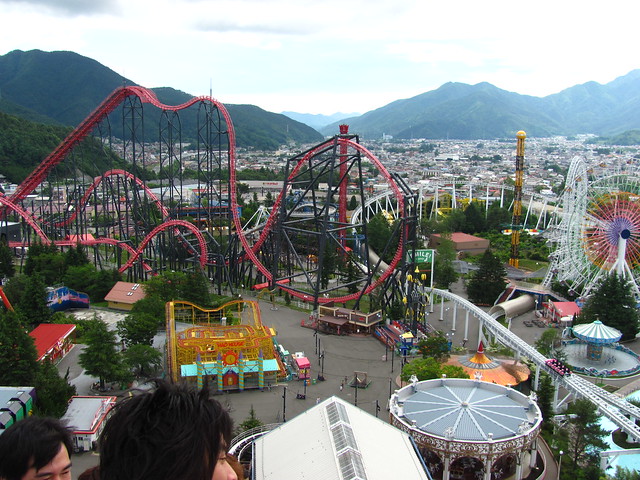








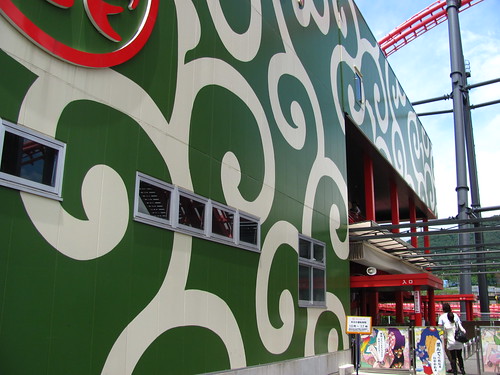















































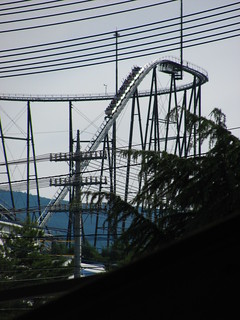












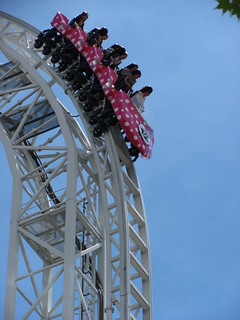









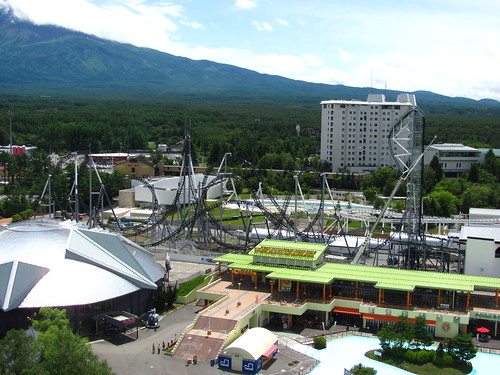



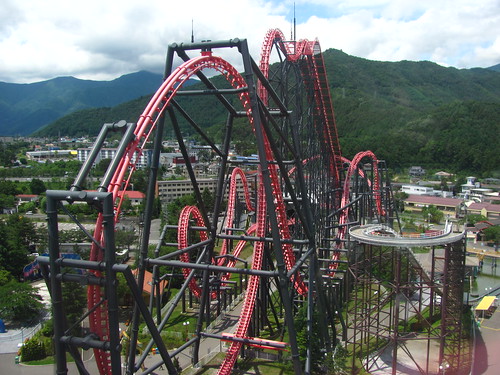












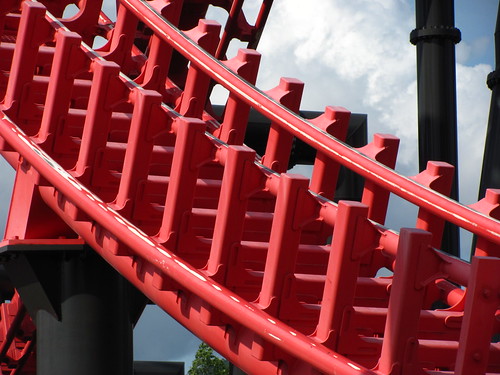

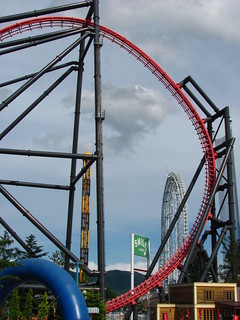











Comments